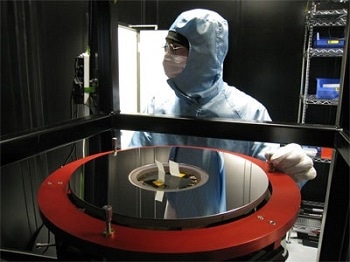 Optical Surfaces Ltd. is a leading international manufacturer of hyperbolic mirrors for deep space observation telescopes and earth observation satellites.
Optical Surfaces Ltd. is a leading international manufacturer of hyperbolic mirrors for deep space observation telescopes and earth observation satellites.
A hyperbolic mirror is the optical component of choice for precisely and accurately focusing light in a telescope from one focal point to the other focal point.
Hyperbolic mirrors are used in a telescope design to correct certain distortions caused by an extremely fast f-ratio design. A hyperbolic secondary mirror is used in Cassegrain telescopes to correct the spherical aberration caused by shorter focal length (smaller f/ratio) of the parabolic primary. In addition, in some more extreme low f/ratio (~f/3) applications served by Ritchey-Chretien telescopes, both primary and secondary are hyperbolic. For large deep space research telescopes, hyperbolic mirrors that correct fast optics are almost always necessary.
Optical Surfaces skilled craftsmen are able to draw upon a uniquely stable production environment to produce hyperbolic mirrors up to 500mm diameter with typical wave front error of lambda/20 P-V, surface finish of 10/5 and microroughness less than 1.2nm RMS.
These hyperbolic mirrors can be supplied mounted or mounted and with a coating exactly optimised for your application. In space borne telescope platforms, where weight is an issue, Optical Surfaces can produce hyperbolic mirrors with light-weighting options.
Optical Surfaces Ltd has been producing optical components and systems for astronomical and space research for more than 50 years. The company’s ISO 9001-2015 approved manufacturing workshops and test facilities are deep underground in a series of tunnels excavated in solid chalk where temperature remains constant and vibration is practically non-existent. With such stable conditions testing, particularly with long path lengths, becomes quantifiable and reliable.
For further information relating to hyperbolic mirrors please visit www.optisurf.com/index.php/products/conic-sections/hyperboloids/.